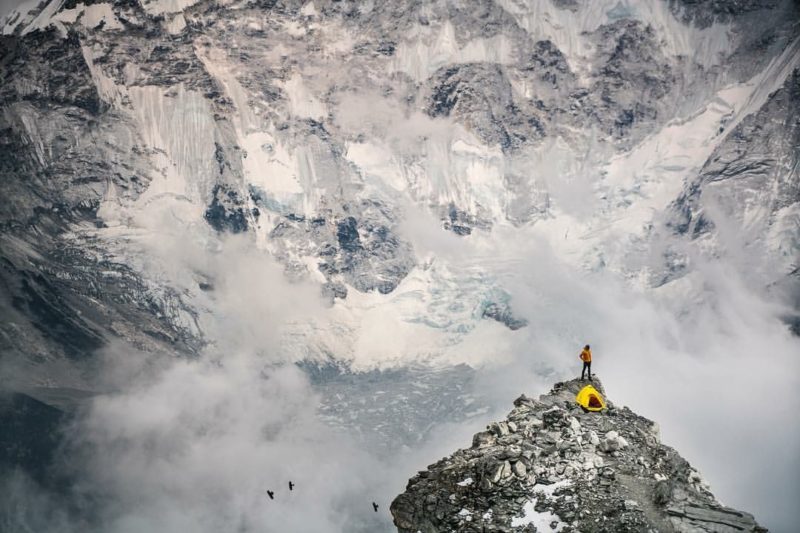Tibet’s New Mountaineering Center

Photos: Cory Richards
Recently we chatted with Alpenglow Expeditions founder/owner, Adrian Ballinger. Earlier this month he posted some exciting news on his social media channels, next year Tibet will begin construction on a mountaineering center in the Qomolangma (Mount Everest) region. We asked Adrian to explain why this is so exciting and who will benefit from the mountaineering center. Here are some of the highlights of our conversation:
 What are the biggest benefits of this center?
What are the biggest benefits of this center?
AB: “1. Way above and beyond anything else – helicopter rescue. Rescue services for Alpenglow teams are already quite good on the North Side of Everest (thanks to our expedition doctor Monica Piris along with talented guides and Sherpa and excellent logistics for getting a sick or injured climber to definitive medical care quickly). But high-altitude-capable helicopters with experienced pilots and a local base will speed up the initial phase of the rescue, which is a real benefit.
2. Better coordination of local support for climbers from around the world.
3. Potentially, better management of Mt. Everest’s environment and resources. Popular mountains around the world need to be regulated and managed. Unfortunately, the South Side of Everest is an example of what can happen when more climbers come to the mountain each year and management/regulation does not keep up. In contrast, Denali and Aconcagua are examples of mountains with strong regulation and management in line with popularity. China/Tibet are anticipating increased popularity, and we hope this center continues their trend of improvement for Everest and climbers’ experience on the mountain.”
 How will it be funded initially but also over the years?
How will it be funded initially but also over the years?
AB: “We will see. I assume by the Chinese government, perhaps utilizing a portion of our permit fees. China seems to be investing heavily in tourism in Tibet in general, and climbing is one small part of Tibetan tourism.”
What does a mountaineering center mean for this region?
AB: “Increased tourism, better resource management, education opportunities for Tibetans in both climbing and tourism. Helicopter rescue services around the world also generally benefit local populations as well as foreign climbers and trekkers. I certainly expect that to be true in Tibet as well.”
Does anything like this exist already?
AB: “In Tibet there is a mountaineering training center for Tibetan high-altitude workers in Lhasa. But this will be the first close to the biggest mountains, and the first to offer helicopter rescue services.”

How is this “another real step in the Chinese/Tibetan commitment to the mountain and the importance of well managed climbing”? What have they done already?
AB: “Two examples of what they are already doing – managing/removing trash from the lower mountain and putting in safe and smart fixed ropes to reduce traffic jams and encourage safe climbs.”
Why have you been advocating for this project, what does it mean to you personally?
AB: “The North Side of Everest is a far more logical and safe way to climb the mountain than the more popular South (Nepali) Side. I want to see Everest climbing become sustainable for generations to come. That means making it as safe as possible for the workers doing this for a living (western guides and local guides and high altitude workers), and keeping the mountain pristine. Helicopter rescue services, and a resource management center close to the mountains themselves, will both aid in making this a reality.”
Read more about the new mountaineering center here. Interested in climbing with us? Click here to view our Mount Everest Rapid Ascent Northside expedition or click here to check out our website. For questions shoot us an email info@alpenglowexpeditions.com or call the office 877-873-5376.